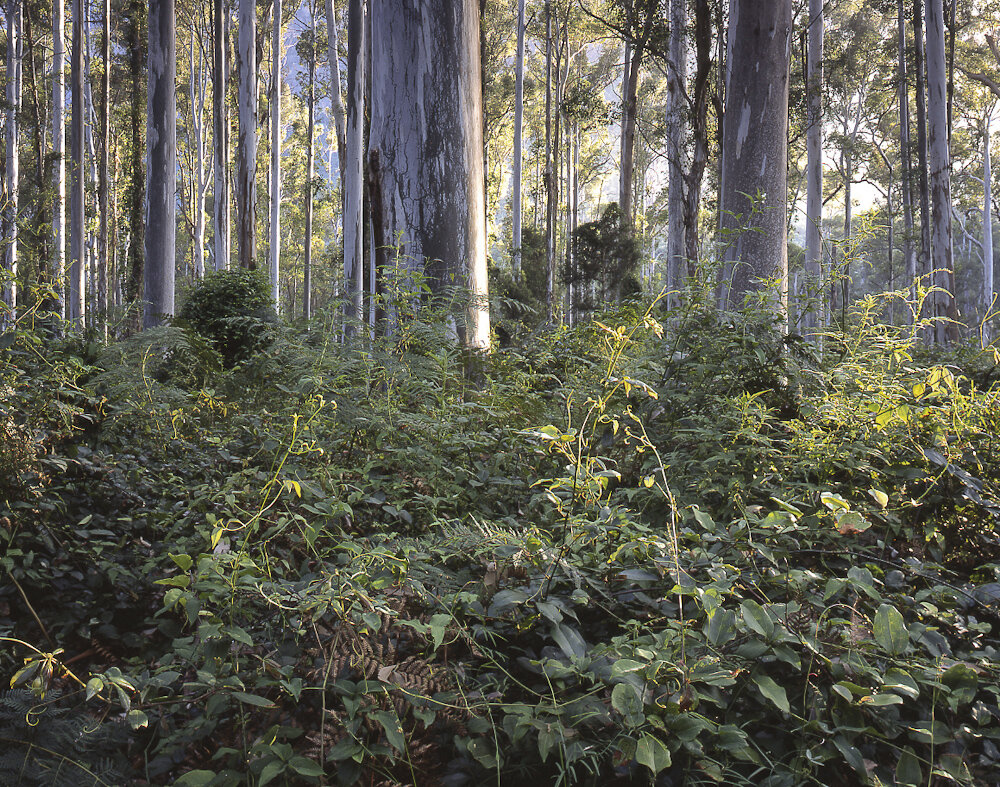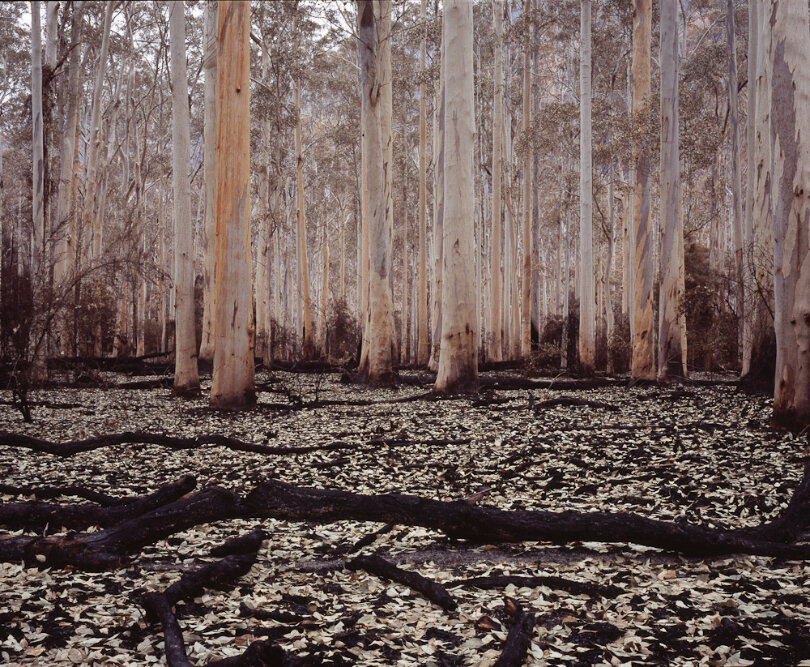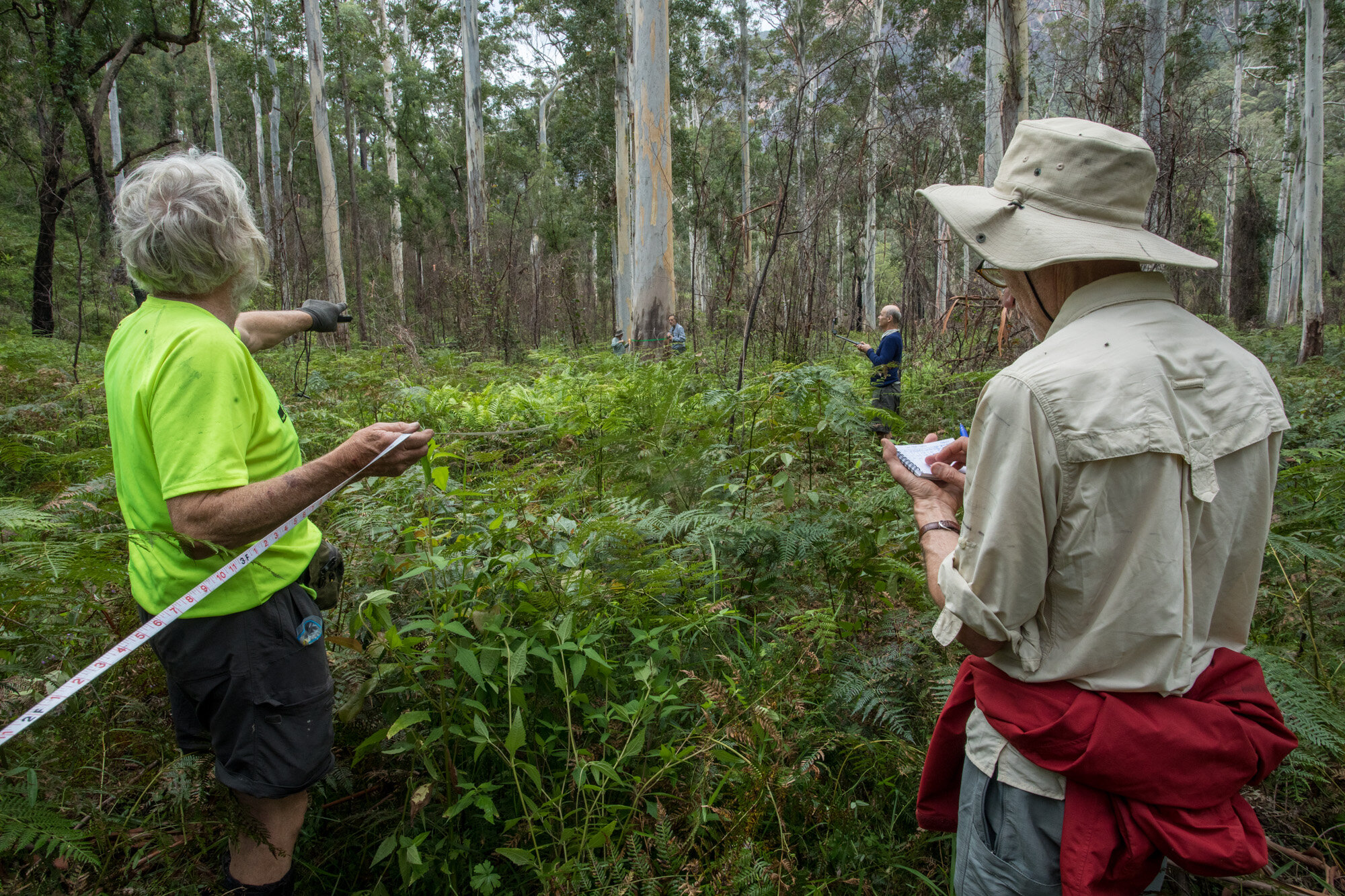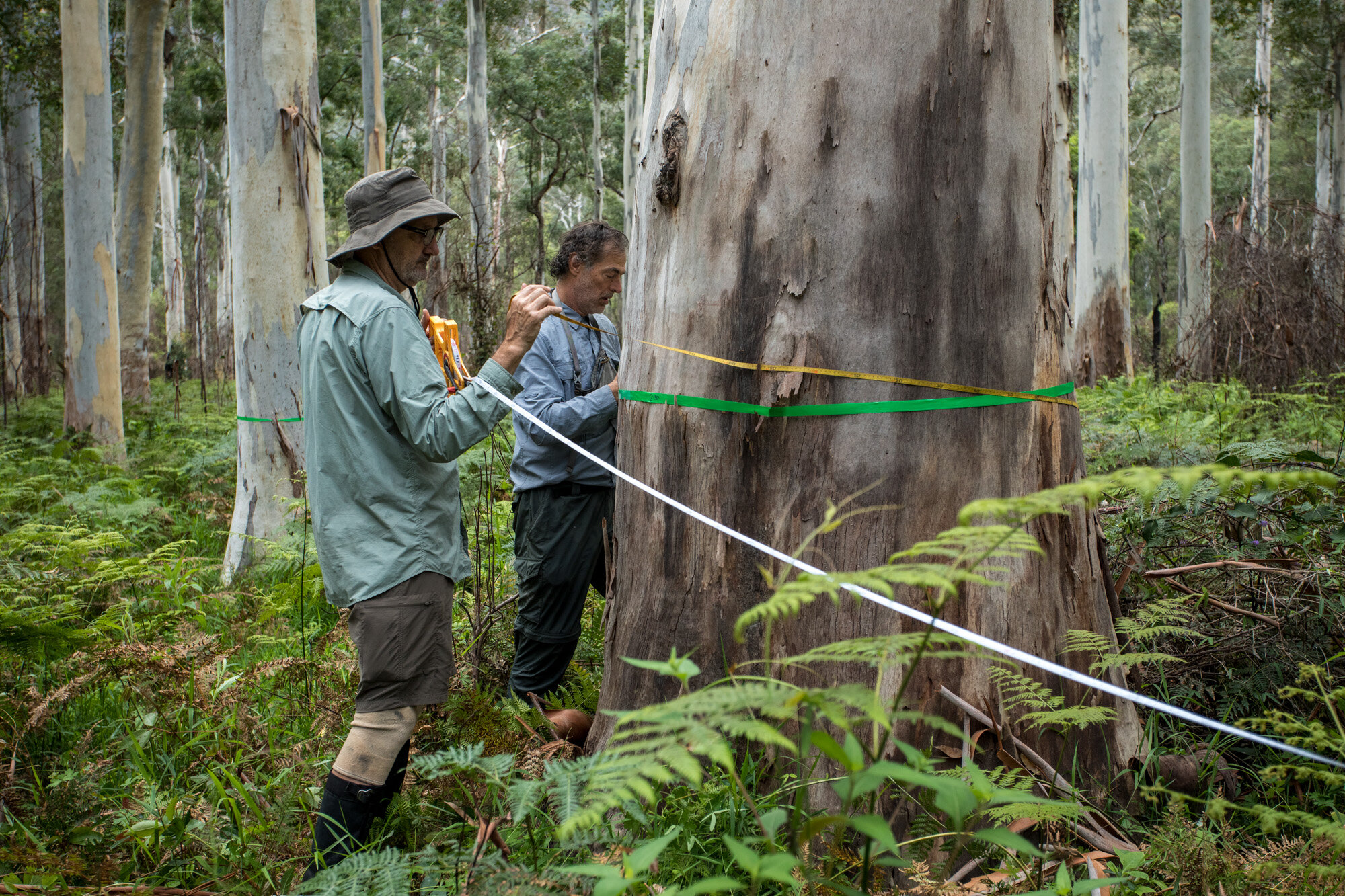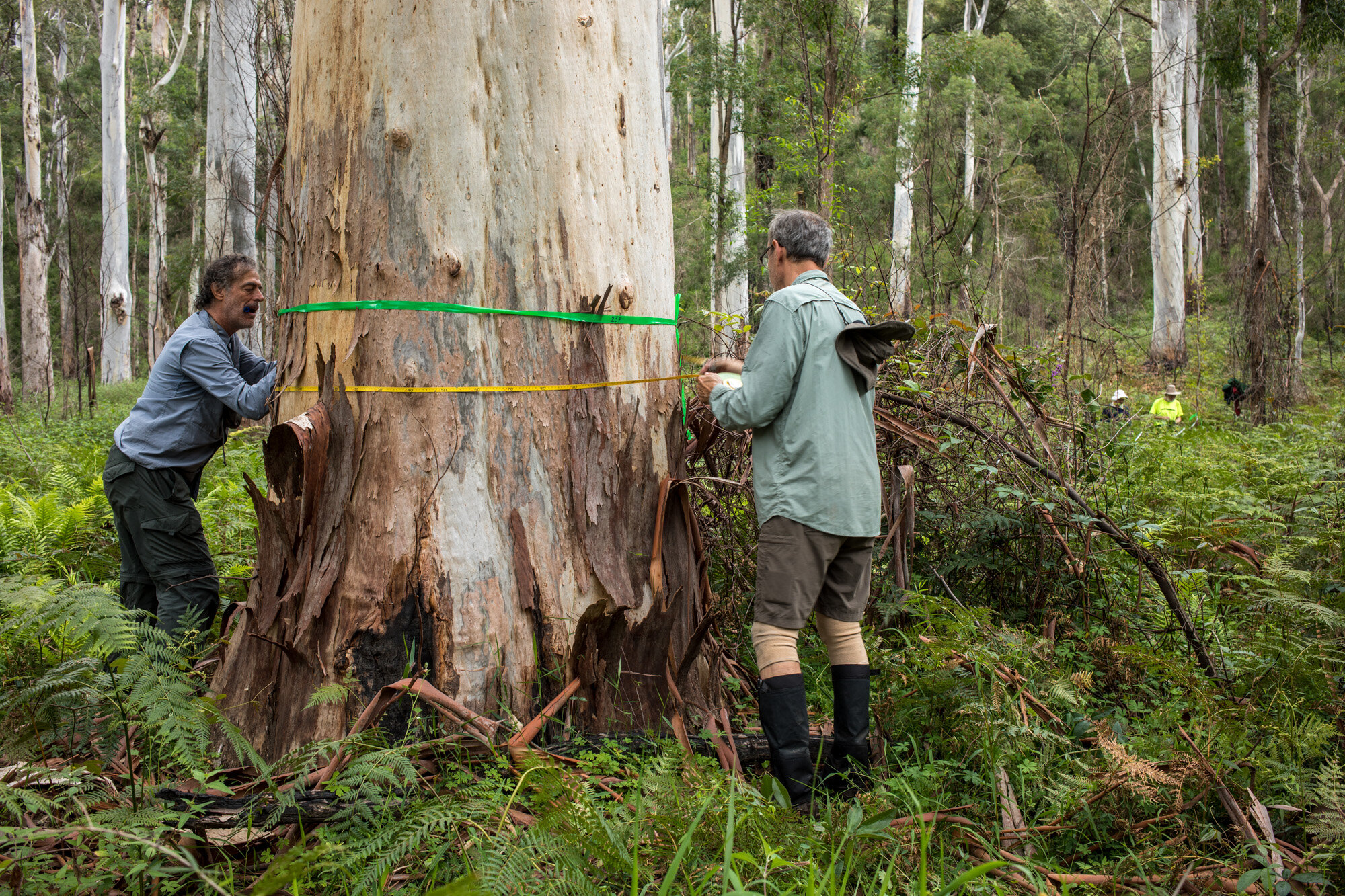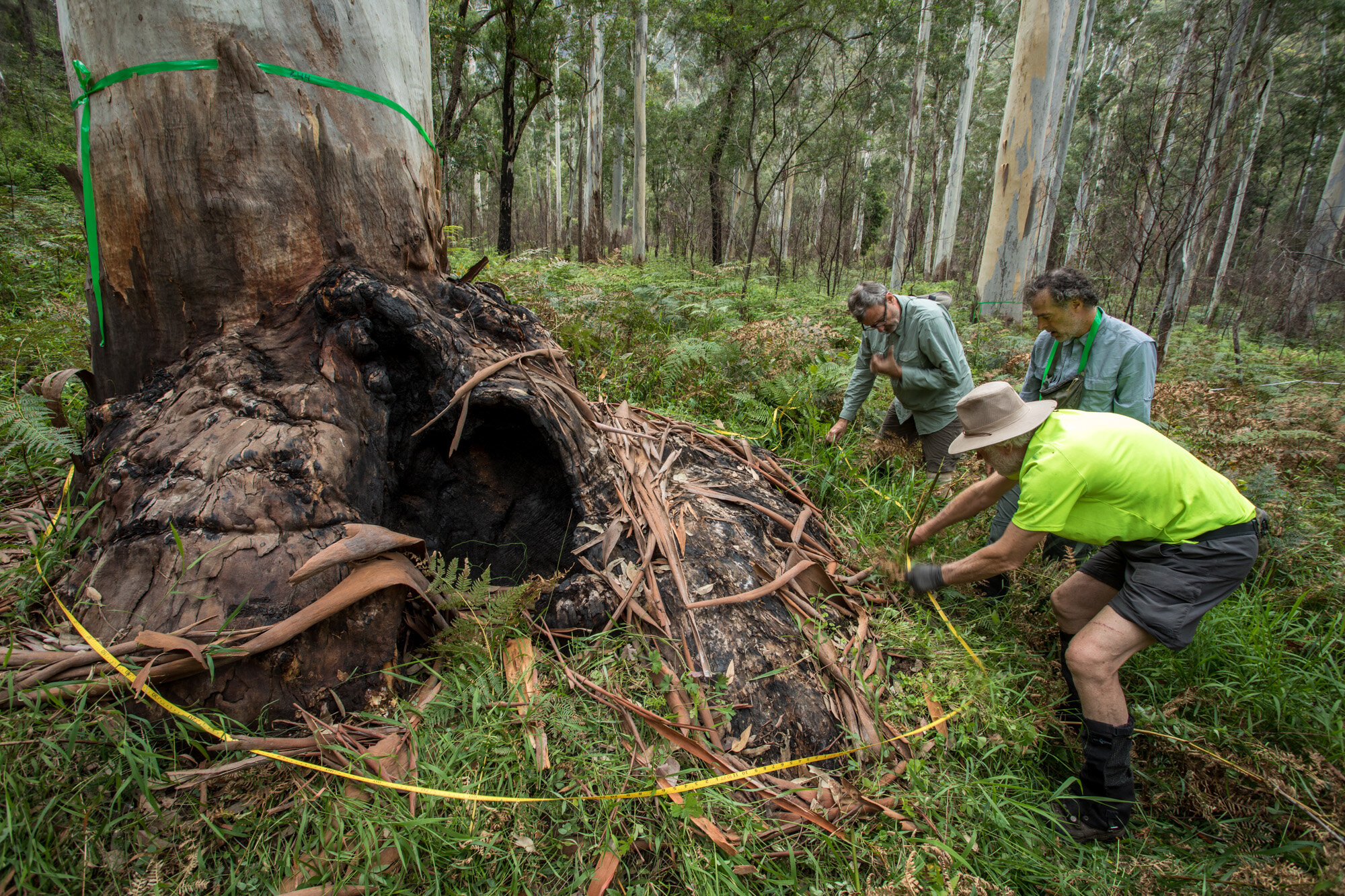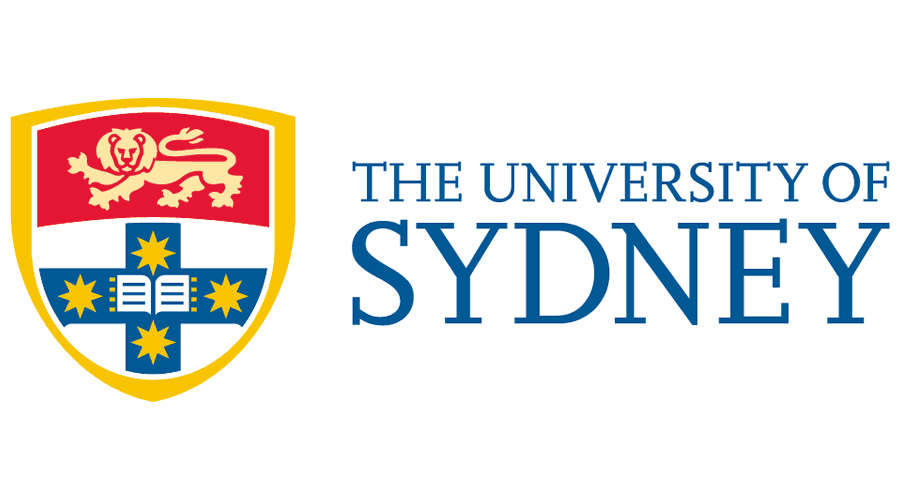The Institute has been awarded a grant of $130,000 from the Australian Department of Industry, Science, Energy and Resources through their Bushfire Recovery for Wildlife and Habitat Community Grants Program.
The grant is for a project that will engage scientists and community members in conducting critical post-fire fieldwork to inform remedial actions and preparations for future fire events.
The field area is the iconic Blue Gum Forest and Grose Valley within the Blue Mountains, where 70 percent of the World Heritage Area was severely impacted by the 2019-20 fires.
The Blue Gum Forest is a stand of magnificent eucalypts and a closed forest system within the Grose Valley that serves as a haven for birds and wildlife.
Above: The Blue Gum Forest | After Fire. Credit: Ian Brown.
“In November 2006 a fire swept the length of the upper Grose Valley and struck Blue Gum Forest on a hot, windy afternoon. A few days later the smoky forest was a bleak study in black and ochre. Stumps still glowed with embers and the ground was carpeted in scorched leaves fallen from the treetops. The forest has recovered well but only time will reveal any long-term impacts” - Ian Brown.
Below: the Blue Gum Forest in October 2020. Credit: Ian Brown
The funding will support researchers in ecology, geomorphology, catchment hydrology and computer modelling to collaborate with volunteer citizen scientists engaged in monitoring the region.
The outcome will be an ecosystem analysis and monitoring data that will help inform decision-making and activate on-ground recovery initiatives by land management agencies and the wider community.
The project will target the following:
1. The ecology of the Grose Valley with an emphasis on the Blue Gum Forest.
2. The ecosystem of the Blue Gum Forest – including mapping of understory components.
3. Landform and geomorphology of the floodplain and fluvial movements.
4. The hydrology of the Grose Valley catchment.
5. A detailed survey of the condition of the plateau, woodlands and forests – these having been extremely altered by the recent fire, the past high frequency of fires and erosion causing soil loss, carbon and nutrient loss.
6. The recovery of endangered species will form part of the program including focus on the plant species Isopogon fletcheri, Lieonema lachaneoides and Zieria covenyi.
7. The role of remnant herbivore populations Grey Kangaroo, Red-necked Wallaby, Swamp Wallaby and Common Wombat in the recovery process, and their contribution to reduction of and patch distribution of understory fuel.
8. Health of the recovering swamp and heath communities on the Lycon to Mt Hay Plateau which impact water quality and quality that flows into the Gross valley.
ACKNOWLEDGEMENTS
This project has been funded by the Australian Department of Industry, Science, Energy and Resources with support from the University of Sydney and the Peter und Luise Hager Foundation.

